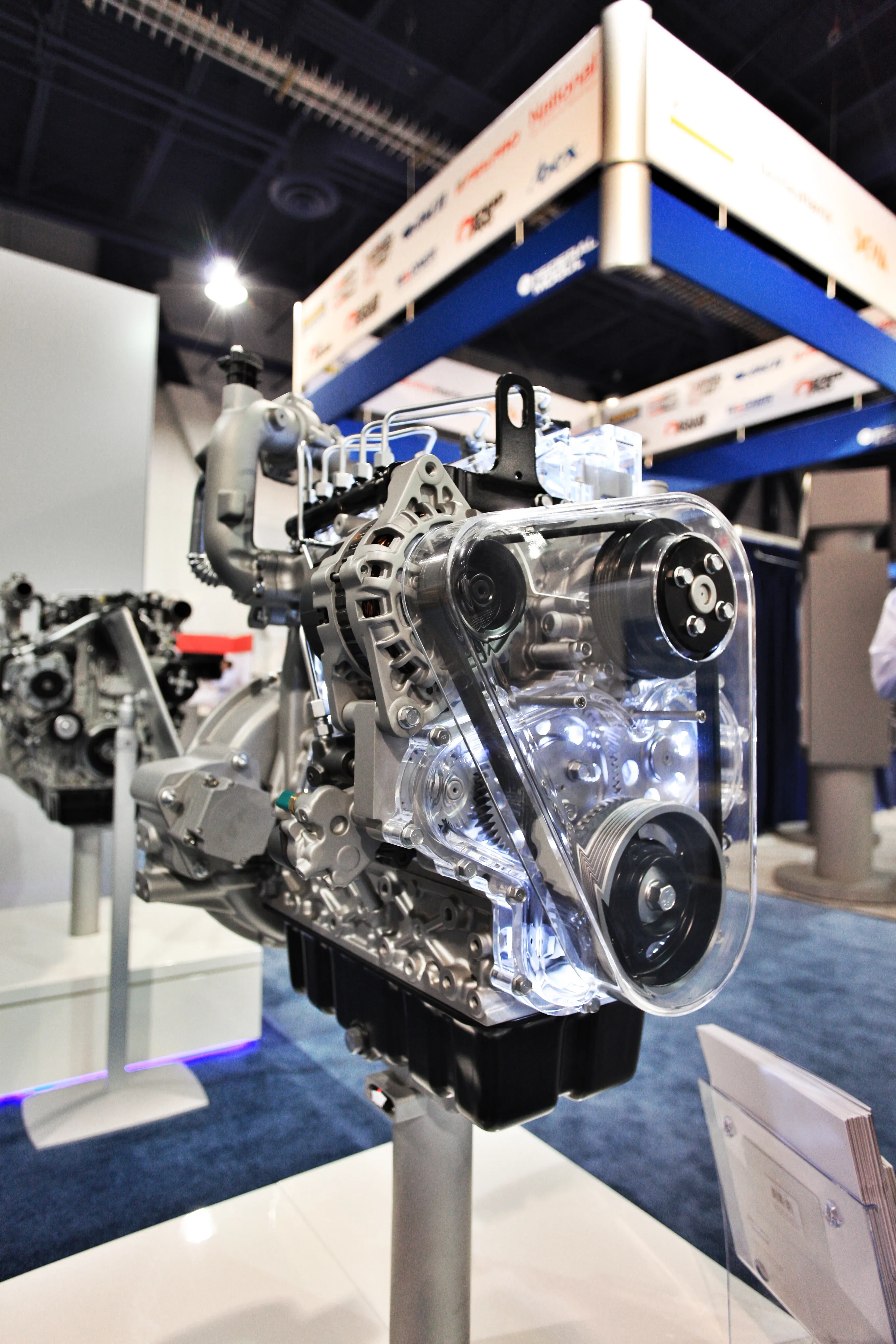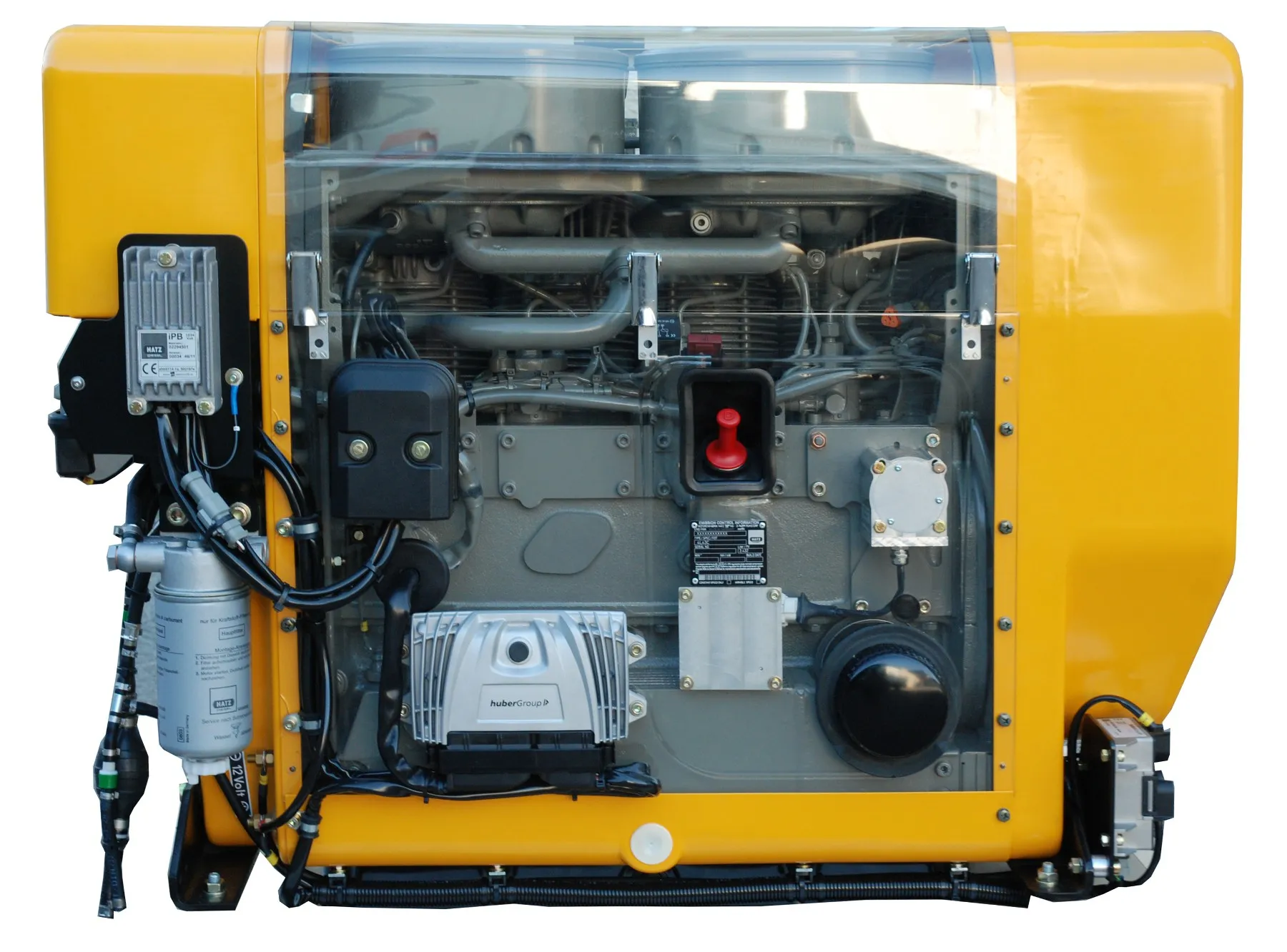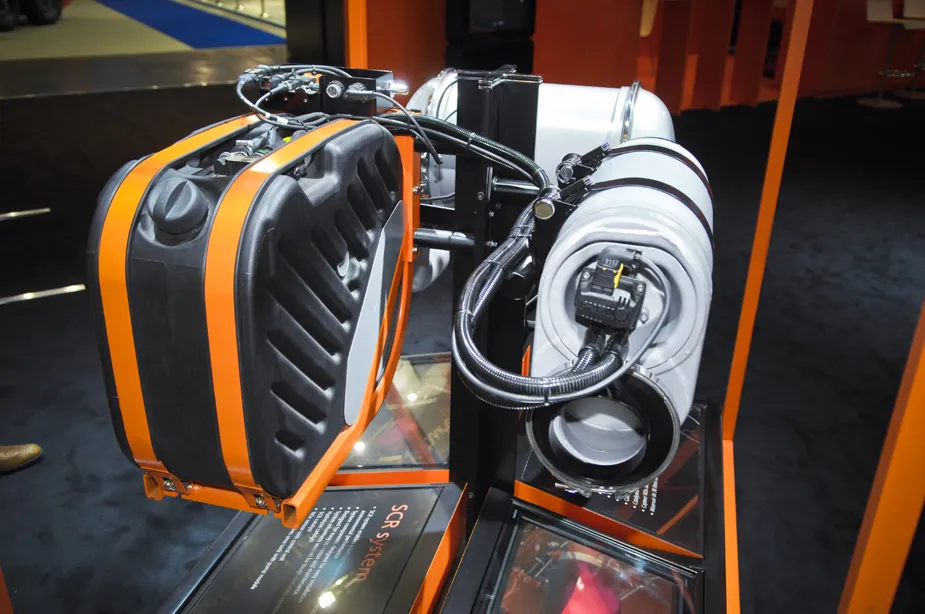Doosan Infracore’s engine business group used Conexpo to launch a new range of compact diesel engines that meet Tier 4 Final emissions legislation and avoid using a diesel particulate filter (DPF).
Called the D18, D24 and D34, the three-model range spans an output range of 20-90kW and offers engine capacities of 1.8, 2.4 and 3.4litres as it targets OEM skid steer loader, compact excavator, air compressor and generator businesses.
The non-DPF solution means the two smaller models need only a diesel oxidati
March 7, 2014
Read time: 2 mins

Called the D18, D24 and D34, the three-model range spans an output range of 20-90kW and offers engine capacities of 1.8, 2.4 and 3.4litres as it targets OEM skid steer loader, compact excavator, air compressor and generator businesses.
The non-DPF solution means the two smaller models need only a diesel oxidation catalyst (DOC), while the larger 3.4litre uses DOC with a selective catalytic reduction (SCR) after-treatment system.
Engine development was under consultation with FEV Group and Ricardo - both internationally recognised powertrain and vehicle engineering companies – steering Doosan towards an ultra-low particulate combustion (ULPC) engine design that has taken six years to come to fruition.
As a result, the compact engine series uses electronic common rail injection, cooled EGR and an optimised piston bowl and combustion chamber. Engine characteristics include a recommended 500hour oil change interval, and Doosan said it expects the engine to offer a fuel consumption of around 2.5litres/hour – 0.4litres lower than the industry average.
The firm also hinted that it was working on high horsepower engines, possibly for use in its
%$Linker:







